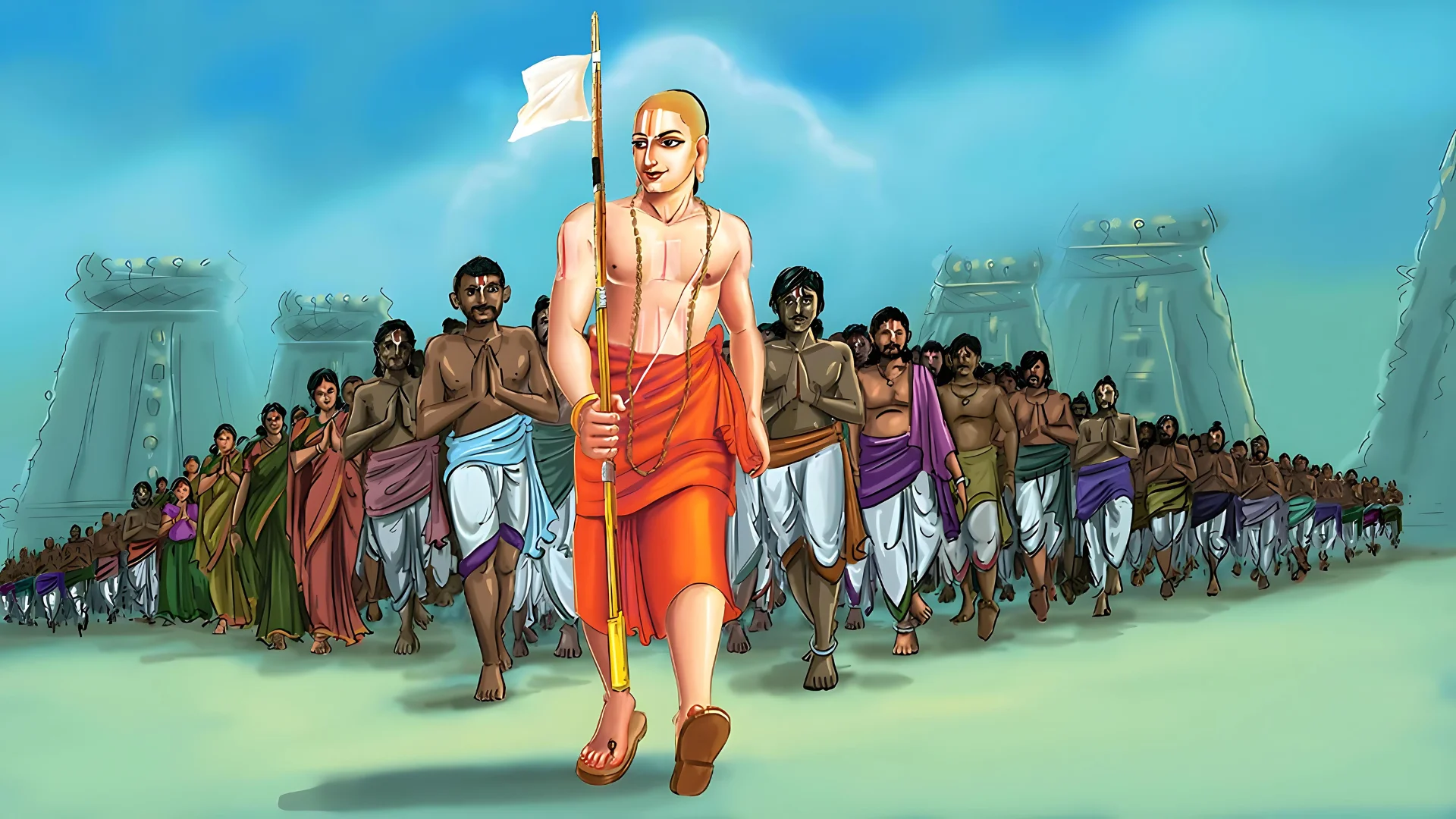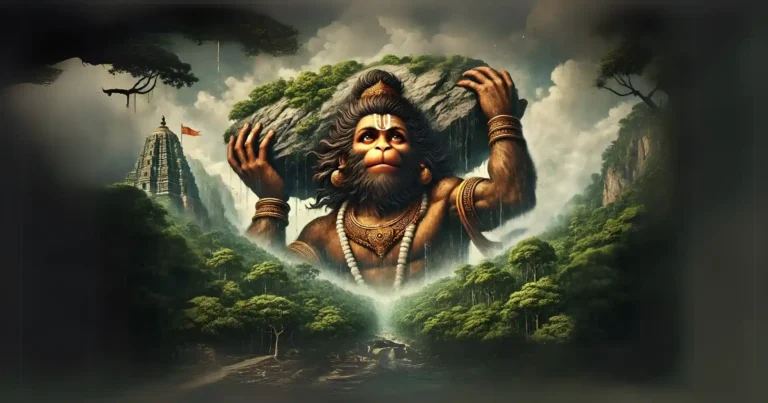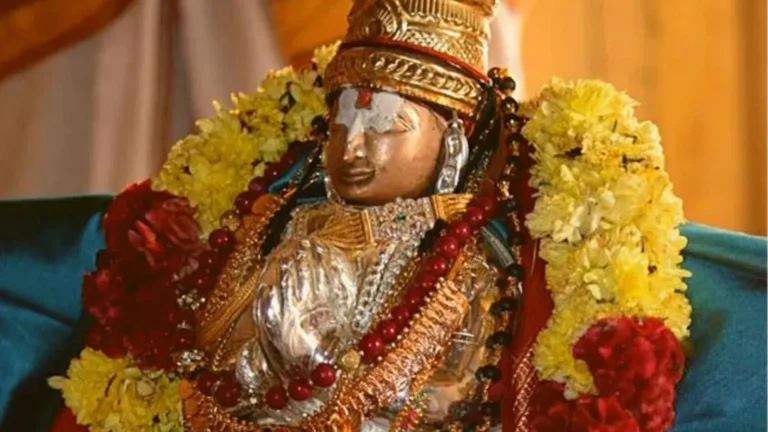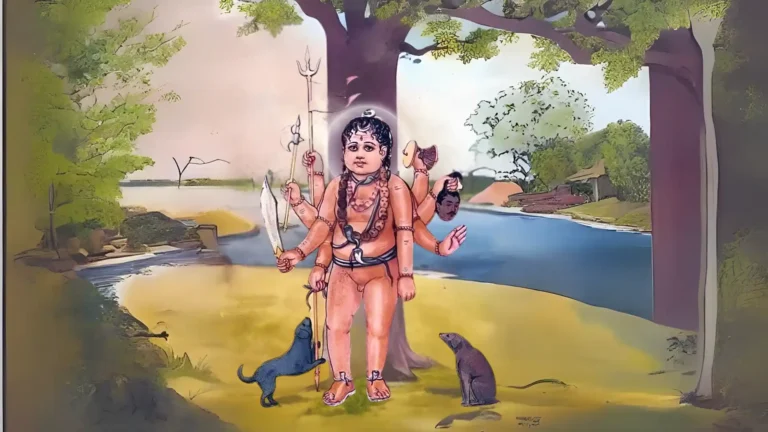Please Like the Blog and Share it for Maximum Reach
Table of Contents
An important Conversation between Sri Ramanujacharya and His Gurudeva
There are many spiritual and life value questions that Sri Ramanujacharya put in front of his enlightened Gurudeva, Sriman Kanchipurna Swamigal.

Understanding and grasping their deep conversations can throw light and illuminate our own spiritual path, so that we can become sincere students of these elevated beings and understand the true purpose of Life and march towards our only mission Vishuddha Bhakti towards the Supreme Lord. There is no other reason for us to read any literature.
I have tried to give a deep realization and interpretation of the important conversation that transpired between a perfect disciple and a perfect Guru.
A brief background of the conversation that revolved around the Sri Ramayana
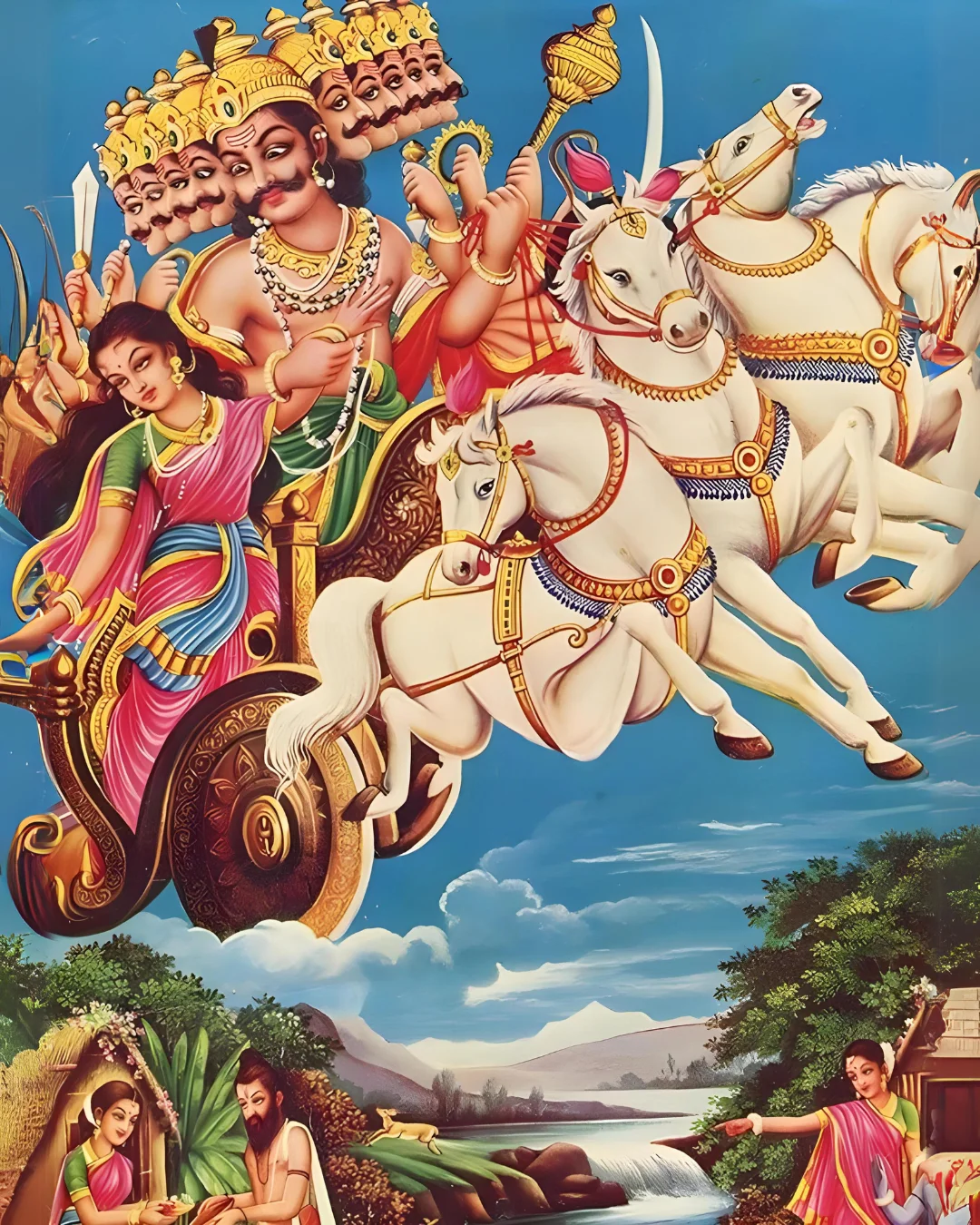
We all know that the demon-king Ravana had kidnapped mother Sita and kept Her at Ashoka Vatika in Lanka. For this reason, our Great Lord, slayed Ravana. Not only that, the entire clan of Ravana stood destroyed. There is another instance when the Devata King Indra’s son Jayant assumed the form of a crow and pecked at the breasts of the Divine Mother Shrimati Sita Devi.
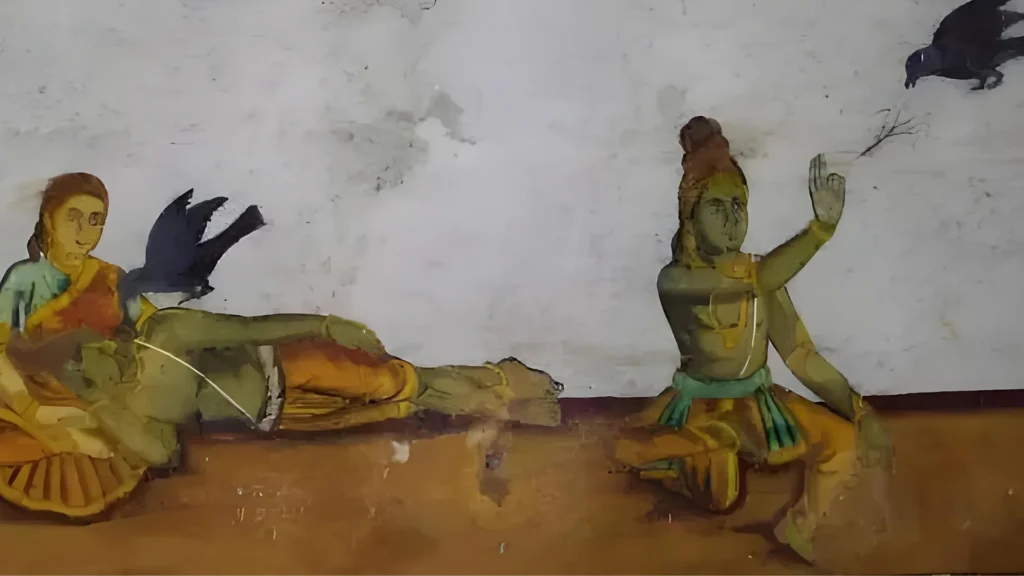
The Divine Mother started bleeding immensely. But still Lord Rama spared Jayant but put an end to Ravana. If one compares the offense of Ravana and Jayant, one can easily see that Jayant had committed a more serious offense, in terms of his mood, intention and action as compared to Ravana.
The Latter carried Mother Sita and kept her at the Ashoka Vatika without causing her any physical harm. One can wonder why the Lord meted out such an unbalanced punishment to the two convicts.
Glories of Surrender-Sharanagati
The difference is that Jayant, after committing the offense, relented and performed Sharanagati or surrendered at the feet of the Lord on the advice of Deva Rishi Narada. Alternately, Ravana maintained his position of offense without relenting. By performing Sharanagati, all of one’s sins and offenses stand nullified, and the Lord pardons the erstwhile sinner and accepts him as his own. In due course, one automatically attains liberation.
Is it important to think of God at the time of death?
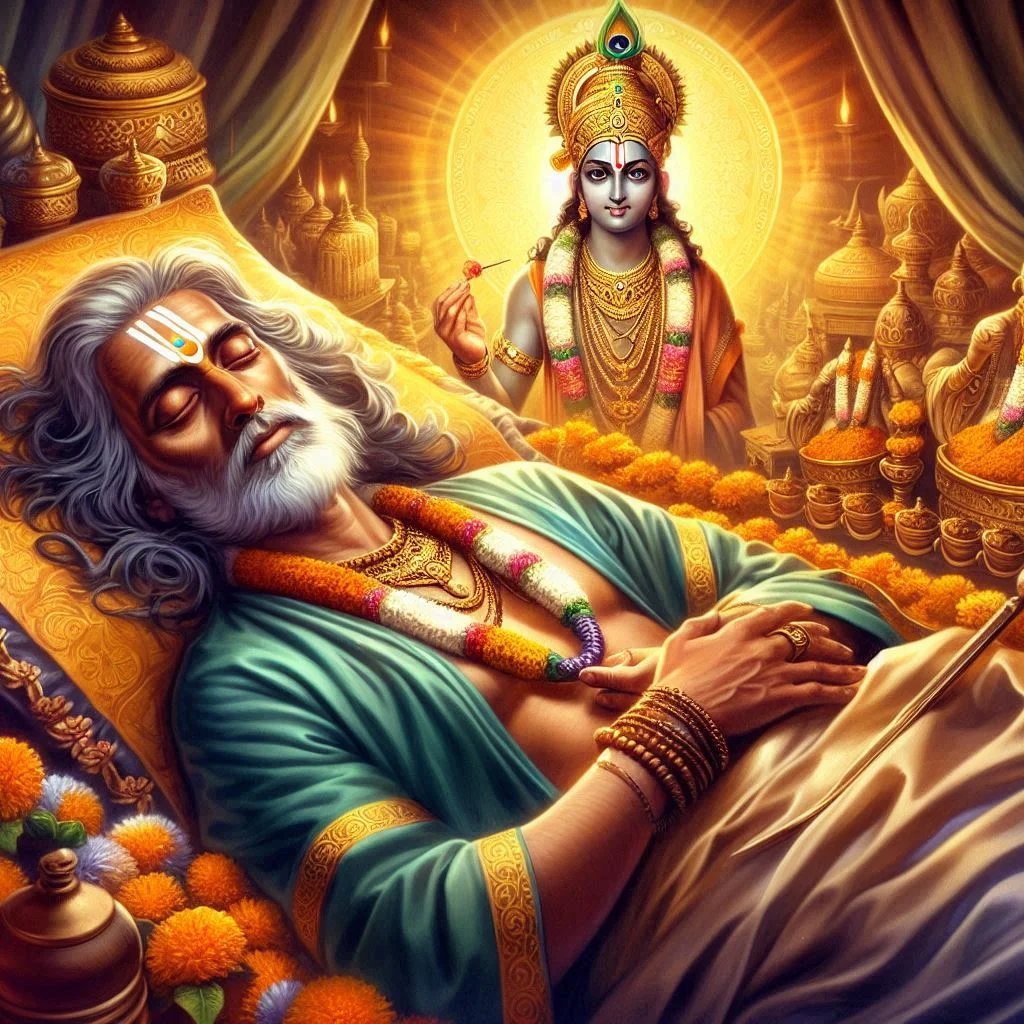
To the question of Sri Ramanujacharya, whether it is required for a surrendered Individual to remember the Lord in the last moments of one’s life, Lord Varadaraja replies to Kanchipurna Swamigal thus. He says: “For a surrendered soul, it is unnecessary to remember the Lord as he leaves his body.” Now one may wonder why this is not required.
A surrendered devotee has transferred all his responsibilities to the Lord. As one is in the final stage of leaving his body, all the 72,000 nerves of the body start exploding. The three types of phlegm namely Vat, Pitta and Kapha fills up the throat and chokes the entire oral passage.
7/8 Questions from Sanatana Dharma
The scores generated in this Quiz may or may not be absolute. There may be right or wrong answers to each Question. A percentage towards 100 indicates that you are more aligned to the overall subject matter.
Lord’s compassion for helpless living entities
In such a helpless position, how can one think of the Lord? That is why the surrendered devotee of the Lord prays “Oh Lord I do not know in what position I shall be when I am on my death-bed. So kindly accept me at your Lotus feet, whereby I transfer all my responsibilities to You and relieve me right away.”
In this elevated mood the devotee surrenders at the feet of the Lord one’s and for all. The Lord proclaims “There is no need for my surrendered devotee to think of Me during the last moments of his life. Since I know all his problems, I shall remember him at the time of his leaving the body. I shall save him from the burden of remembering me. The result is that he shall attain liberation just because I think of him.”
An Important conversation from the Varaha Purana
In the Varaha Purana, the Lord addresses Bhudevi, “Since the chest and throat of the living entity gets filled with phlegm, one should be wise and surrender unto Me well before the time of death. It would be better if the living entity surrenders to Me and hands over all His affairs to Me. I then take the full responsibility of the living entity. I think of the surrendered living entity at the time of his departure and liberate him.”
An event in the life of Sant (संत sage) Soordas
Once the great devotee of Lord Krishna named Soordas visited Badrikashramam. He desired to have Darshanam (दर्शन: to have the spiritual view) of Lord Badri (Vishnu). The other devotees stood surprised on hearing this. Sant Soordas was blind from his childhood. They asked him “Guruji, how would you have Darshanam of the deity in Badrikashramam? How can this be possible?”
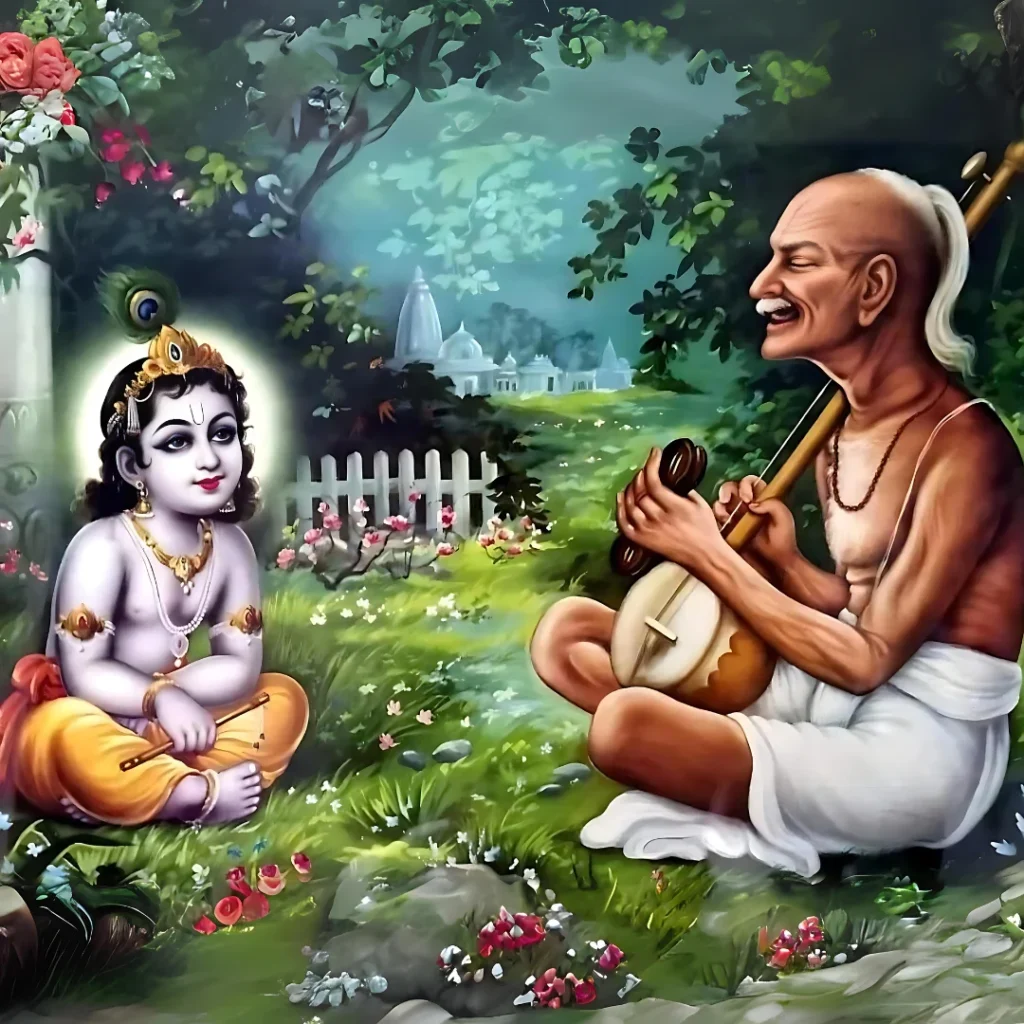
To this the great sage said “I am blind from childhood but the deity has eyes. He sees clearly whoever visits the place. So, for the sake that the Lord sees everyone, I shall visit the place.”
Such was the pure emotion of Sant Soordas. Whether the Lord sees us or we see the Lord, it is we who are going to benefit by the act. Similarly, whether the Lord remembers us at the time of death or we remember the Lord, it is we alone who will get liberated.
The Last Doubt of Sri Ramanujacharya

Sri Ramanujacharya had this doubt as to whom he should accept as his preceptor. Lord Varadaraja gave his verdict that Sri Ramanuja has to accept the disciple of sage Yamunacharya named Mahapurna Swamigal as his Guru. Thus Lord Vardaraja of Kanchipuram answered all his doubts. Thus Sri Ramanujacharya took Guru Diksha (गुरु दीक्षा spiritual initiation) from Mahapurna Swamigal.
The story of Diksha of Sri Ramanujacharya is also very interesting.
Story of Diksha of Sri Ramanujacharya
Sri Ramanujacharya arrived at SriRangam to accept Diksha. He requested Vaishnava Diksha from Mahapurna Swamigal there. Somehow the Diksha ceremony was getting postponed. It so happened that once Mahapurna Swamigal undertook a Yatra, a spiritual expedition, Sri Ramanuja accompanied him. Sri Ramanuja was constantly worried about his formal Diksha. He would repeatedly enquire from Mahapurna Swamigal “Guruji, when shall you give me Vaishnava Diksha?”
To this Swamigal said “Alright, we shall have the Diksha ceremony when we reach Kanchipuram.” On the way they passed through a jungle. In that wilderness there was an old temple of Sri Rama known as Kodanda Pani Kovil (கோதண்டபாணி கோவில் Temple of the Bow Wielding Rama). Both of them were resting in the Temple. Mahapurna Swamigal was fast asleep but Ramanujacharya could not sleep. He lost himself in thought about his Diksha.
At what Time, Place and Situation should one get Initiated?
He would wonder “I am still not a Vaishnava. I have not yet surrendered at the feet of the Guru. If I die now, in the next moment, then my entire life shall be futile. Death can occur even in sleep.” Suddenly in the dark hours of the night, he got up with a jerk and started waking up Mahapurna Swamigal.
He demanded “Guruji, kindly make me a Vaishnava right now and grant Diksha to me.” Guruji said “Right now? At the odd hours of night? You can wait, I will give it to you at Kanchipuram.” To this Sri Ramanuja said “Life is unpredictable and with no surety. What if we do not reach Kanchipuram and I die on the way? Please grant me Diksha right now.”
So saying Sri Ramanujacharya held the feet of his preceptor. Seeing Sri Ramanujacharya’s attachment to the Lord and the Vaishnava Dharma, Mahapurna Swamigal granted his Diksha, in that hour of the night. His preceptor granted Diksha , then and there to Sri Ramanujacharya.
In Vaishnava Dharma, it became a norm that for Diksha, there is no need to assess time, place and situation for, especially for Vaishnava Diksha.
When is Muhurta important?
There is no Muhurta (முஹூர்த்தம் auspicious time) that is to be looked into, while giving Vaishnava Diksha to devotees. For everything else there is Muhurta. Religious activities undertaken for fulfillment of desires and welfare of family, etc demands seriousness to look into Muhurta.
But, to surrender to the Lord there is no Muhurta. If the Acharya of Vaishnavism, Sri Ramanujacharya Himself got his Diksha at the oddest time, then who needs to care for the time for receiving Vaishnava Diksha? We must learn from the life of Acharyas to know what is most appropriate for our spiritual welfare.
In Vaishnava Diksha there are 5 types of Samskaras or types of Vedic processes that are carried out namely:
1) Tapa (तप),
2) Punya (पुण्य)
3) Mantra (मंत्र),
4) Nama (नाम)
5) Yaga (यज्ञ) Samskaras.
We shall discuss two of these samskaras which form the fundamental initiation process in the Sri Vaishnava Sampradaya.
What is Tapa Samskara?
In the Tapa Samskara, one applies the embossed emblems of the Lord such as Shankh (शंख) and Chakra (चक्र), heated in fire, on the arms of the devotee.
The devotee applies the three Vertical symbols of Tilak on his forehead as a mark of Sharanagati.
What is Nama Samskara?
In the Nama Samskara, the Spiritual preceptor of the devotee gives a new Name. This new name represents the name of the Lord and then adds Das at the end of the devotee’s name.
For example, if a devotee’s name is Damodar he shall be called Damodar Das. Then he is initiated into the mantra by his preceptor through rituals.
The devotee then does Sashtang Dandavat to the Lord. The spiritual master, on behalf of the devotee, prays to the Lord to accept the devotee into His fold.
Only after such a process, the Lord accepts the devotee as His surrendered devotee. This is the authorized process of the Sri Vaishnava Sampradaya. In Kanchi, Sri Ramanujacharya accepted the Kainkaryam (கைஂகர்யம் devotional Servitorship) to Sri Varadaraja Perumal.
How to Understand the Power of Spiritual Mantras?
There was a very renowned sage in the Vaishnava Sampradaya known as Goshthipurna Swamigal. Sri Ramanujacharya had the good fortune of hearing Mantra from the sage. It is important to understand the potency of a Mantra.
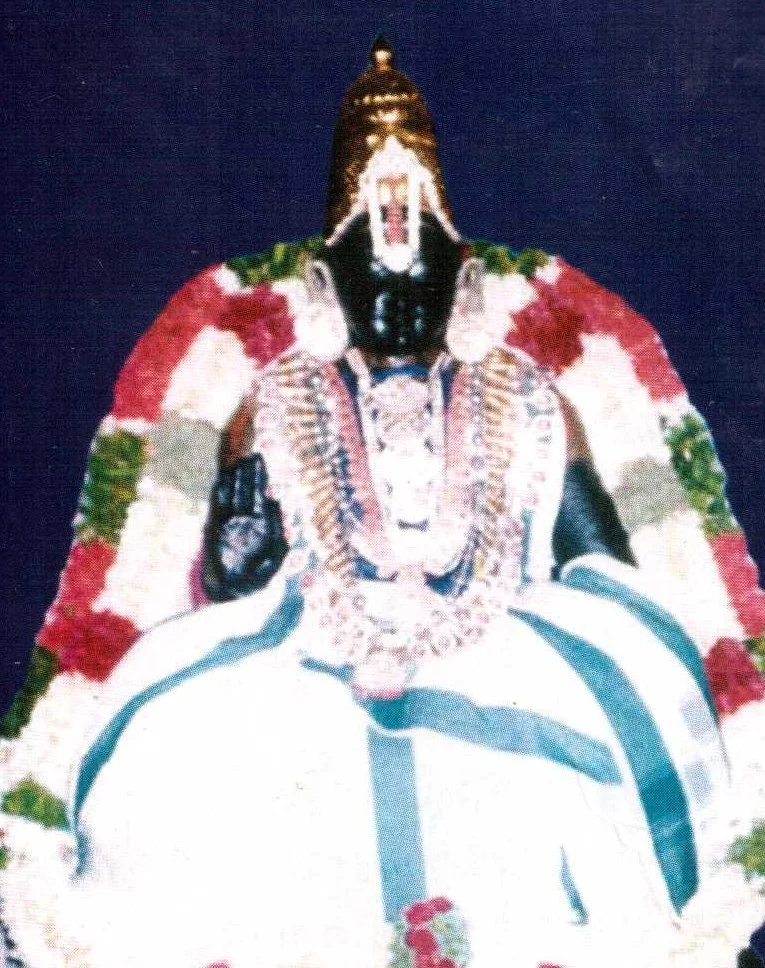
When a seer of Truth weighs each syllable of the Mantra , the meaning of every syllable can fill a 300 pages book. Hence an eight syllable mantra, from the seer’s viewpoint can churn out meaning that can fill 2500 pages. This is the rough meaning of Mantra.
Meaning of Om Namo Narayana Mantra
When someone gets a mantra like “Om Namo Narayanaya”, one only understands this mantra regarding the direct meaning of the mantra; here it means “I bow down to Sriman Narayana praised by the syllable Om” However this is only the external significance of the mantra.
Can Anyone receive Mantra Initiation ?
In the Bhakti Parampara, the Guru gives Mantra to the devotee who has surrendered his heart completely to the service of the Lord and Guru, with no ulterior motives.
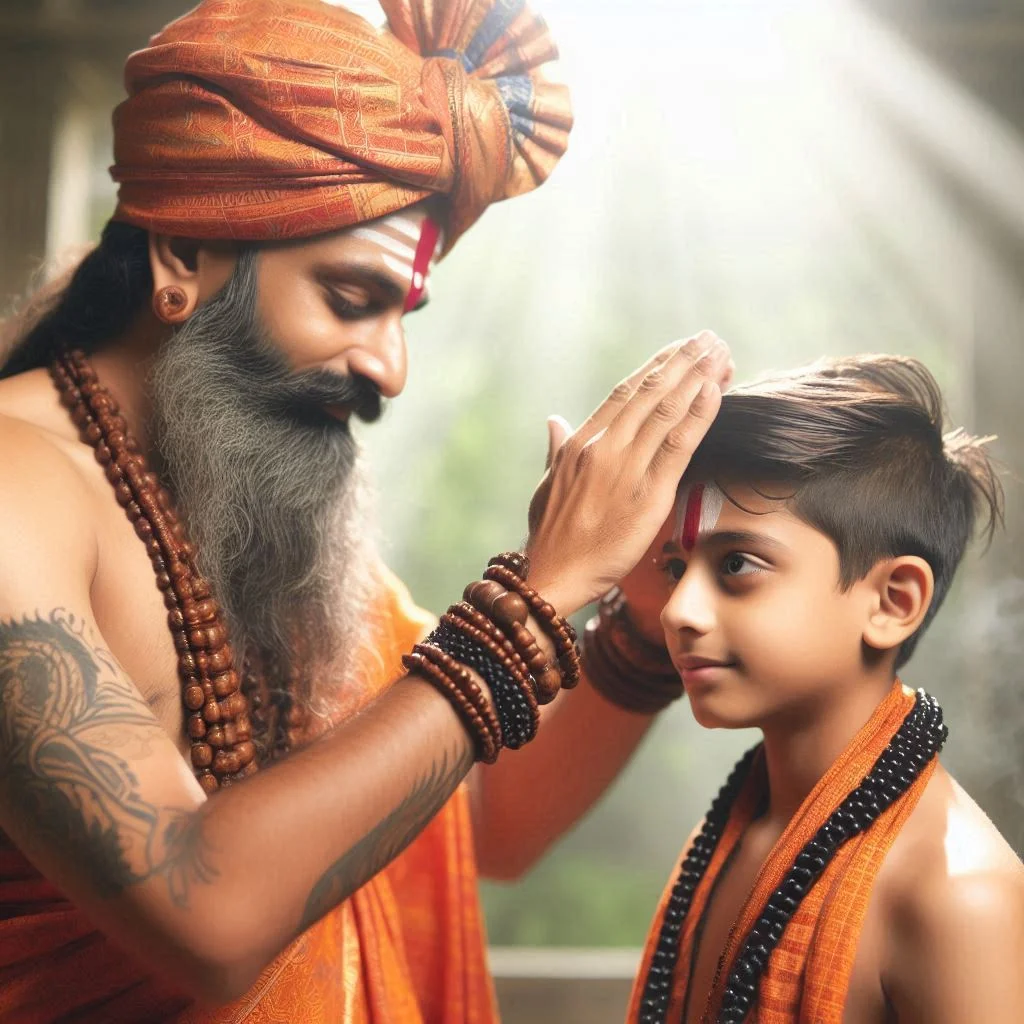
In about 1000 devotees, only 1 or 2 devotees can qualify for hearing Shuddha Mantra. The Mantra has to be adorned in the heart. Not everyone shall be able to digest the esoteric aspects of the Mantra. One who attains the understanding of it becomes a confirmed candidate of Vaikuntha, the spiritual world.
Compassion of Sri Ramanujacharya
Sri Goshthipurna Swamigal found that Sri Ramanujacharya was a perfect candidate for receiving the Mantra. The sage told Sri Ramanujacharya “I am giving you the most elevated and auspicious Mantra for the Mantra that you received from your Spiritual preceptor. However, do not share it with anyone else because it is a great secret and not everyone is eligible to accept Mantra.”
Ramanujacharya enquired “Why Guruji, Why should we not share the mantra with ineligible people?” To this the Swamigal replied “Then, even those beings shall ascend to Vaikuntha, but the one who has leaked this to ineligible beings shall go to the lowest hell. That is the scriptural law in relation to the Mantra.” Sri Ramanujacharya received the Mantra from Swamigal and then pondered, “If everyone can easily go to Vaikuntha with this Mantra, why not give it to everyone freely? Only I shall go to hell, but all the rest shall ascend to Vaikuntha. This is not a poor deal at all.” he thought.
How were the 72 Peethadipatis of Sri Vaishnava Sampradaya Initiated?
The Ocean of Compassion, Sri Ramanujacharya climbed up to the highest point of the temple dome known as the Gopuram. He spoke out loud, the entire Mantra so that all the people in the crowded streets could hear. Out of the population that was present on the streets, 72 people could completely adorn the Mantra. They assimilated its deep import.

These 72 individuals, later, became the pontiffs (पीठाधिपति Peethadipati) of the Mutts that Sri Ramanujacharya established all around Bharata Desam. Through the medium of these 72 Mutts, Bhakti Parampara spread through the length and breadth of the country. When Sri Goshthipurna Swamigal came to know of Sri Ramanujacharya’s act of shouting out the Mantra, he became upset. Sri Ramanujacharya went against the instructions of his spiritual preceptor.
Ramanujacharya gets blessings from Sri Goshtipurna Swami
The Swamigal asked Sri Ramanujacharya, “Are you not afraid of hell, that you have gone against my instructions?” To this Ramanujacharya, bowing down humbly before his preceptor said “By disobeying your kind orders, only I shall go to hell. But the good news is that, the people who have heard me the other day shall reach Vaikuntha, and that is my success.”
Seeing the compassion of Sri Ramanujacharya, the Swamigal embraced Sri Ramanujacharya out of intense love and affection. He said “You cannot go to hell. Even if someone utters your name, they shall go to Vaikuntha. Whoever remembers you, who shall surrender to you in their hearts, people who consider you as their Acharya, all of such beings shall ascend to Vaikuntha without doubt.”
Dilemma of Lord Balaji
There is an interesting anecdote of Shri Tirupati Balaji, the Lord of Tirumala in modern day Andhra Pradesh. This is the story of how Tirupati Balaji, the Supreme Lord accepted the discipleship of Sri Ramanujacharya. When the Lord first appeared at the 7 hills of Tirumala, as His Archa Vigraha (अर्च विग्रह) or the deity form, the local population thought that it was the deity form of Lord Karthikeya, the son of Lord Shiva and Mother Parvati.
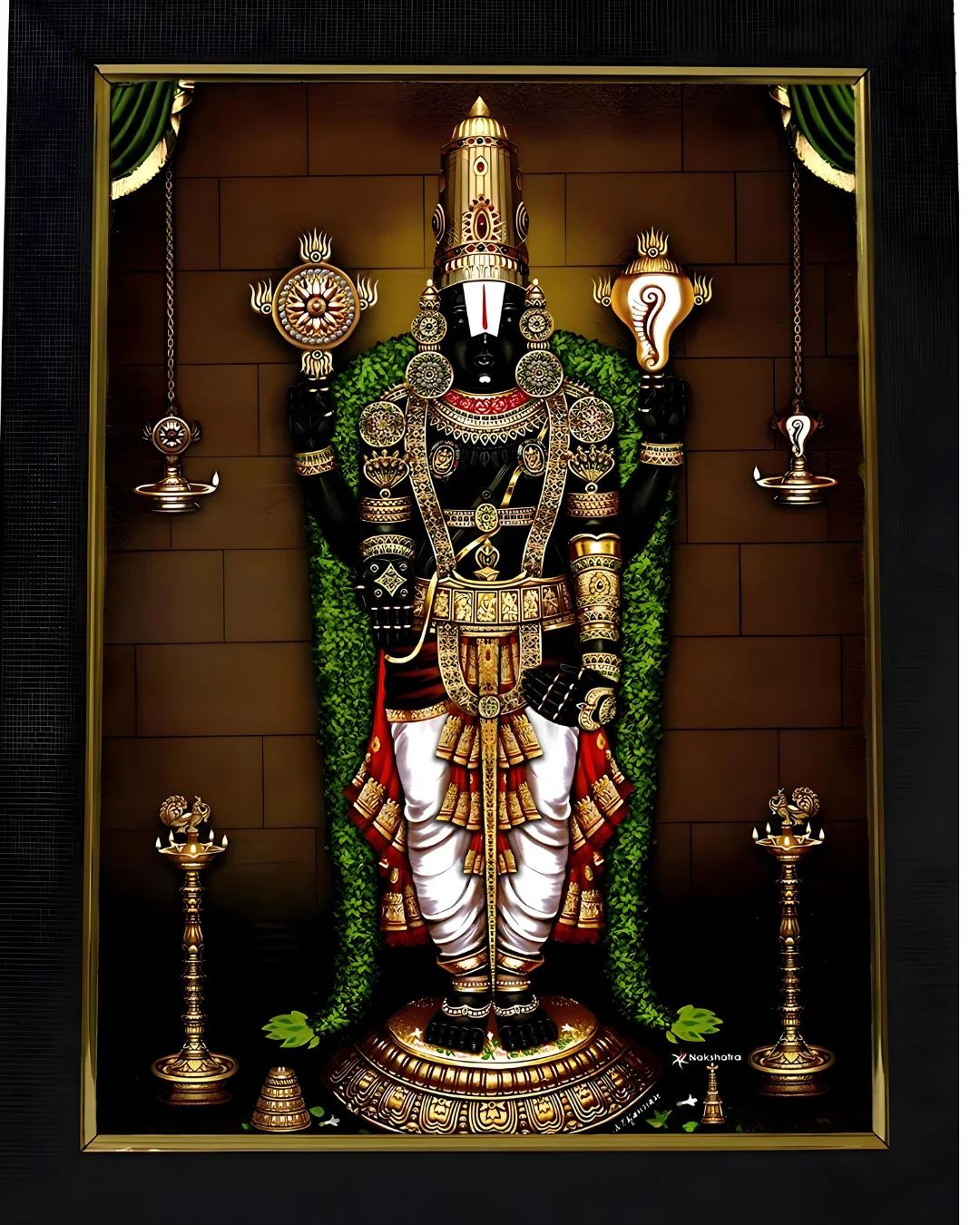
The Local people built a temple immediately around the deity. They used to offer oil to the deity and other offerings normally given in service to Lord Karthikeya. The Supreme Lord, Balaji could not tolerate this misrepresentation of His deity form. Hence He appeared one day in the dream of Sri Ramanujacharya and apprised him of His predicament.
King seeks the Identity of the Deity
The Lord requested Sri Ramanujacharya to perform worship and offerings to His Balaji deity form and revive Him under the Vaishnava Parampara system. Sri Ramanujacharya then went to the seven hills of Tirumala accompanied by 1000 Sannyasis of the Vaishnava order. The Vaishnavas summoned the king of the region. Many spiritual debates begun between the groups of Sri Ramanujacharya and the local scholars.
The debates went on for several days, but the King desired a quick decision regarding the deity form of the Lord.
How did Lord Balaji get recognized as Sri Narayana?
The deity did not bear any emblems or marks that could determine the form of the deity, whether it belonged to Lord Karthikeya or Lord Balaji. It had four hands, yet there they could not identify the form of the deity. The King devised a mechanism to identify the form of the deity. The King said “Keep a Trident, conch, sword, other arms and weapons of various deities and then keep the doors of the Temple locked for a night.”
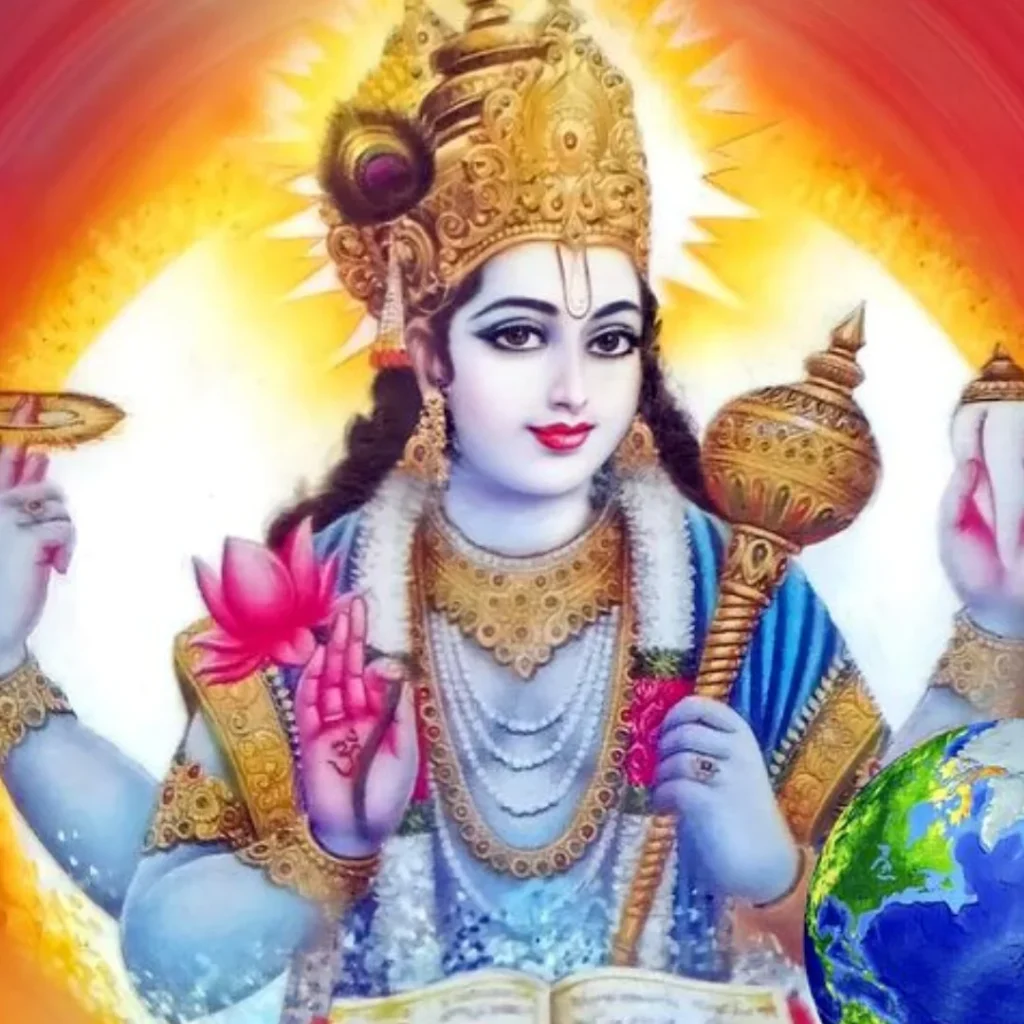
“Respective devotees can pray to their deity form. If the deity is genuine, it shall adorn the respective weapons depending on the deity’s actual form.” Likewise, for that night, people placed the weapons inside the temple and locked the temple doors. Devotees who believed that the deity belonged to Karthikeya prayed to this form in their hearts whereas the Vaishnavas prayed to Lord Narayana in their heart.
During the night long Hari Kirtanam, the Lord spoke to Sri Ramanujacharya in his heart. The Lord said, “It is your duty to safeguard my interests, so do something.” Sri Ramanujacharya then said “Oh Lord, what can I do? I am also helplessly doing your Kirtanam sitting outside the locked doors of the temple.”
Sri Ramanujacharya is the incarnation of Lord Sheshanaga
The Lord replied “Just enter the temple and install the Shankh (Conch) and the Sudarshan Chakra onto my hands. The problem shall be solved.” Sri Ramanujacharya said “Oh Lord, what type of proposal is this? The Locals have shut the Temple and locked it. How can I enter the sanctum? You are the Supreme Lord, you can do this job by yourself because you are all-capable.” The helpless Lord said “In my Archa Vigraha Lord, I do nothing. My devotees are supposed to take care of my needs. Here I am supposed to take services.”
“If the devotees give me a bath, I take a bath, If my devotees offer me food, I have it. Otherwise I do nothing. If you can do something, then do it.” Sri Ramanujacharya again expressed his limitations and inability. The Lord then spoke thus “You are Shesha Avatar, Lord Sankarshana, my resting couch, who assists me during all My earthly incarnations. You are all-capable.”
Tirupati Balaji blesses Sri Ramanujacharya?
“In one form you continue doing Kirtanam and in another form of a snake, enter the temple through the drain pipe and get my work done.” Sri Ramanujacharya then realized His own eternal position and assumed the form of a snake, entered the temple and installed the Shankh and Chakra on the hands of the deity form of Sri Tirupati Balaji.
Now the Lord proclaimed, “You have installed Shankh and Chakra on my hands, just as the Guru embosses the Shankh and Chakra on the hands of his disciples and saves them.”
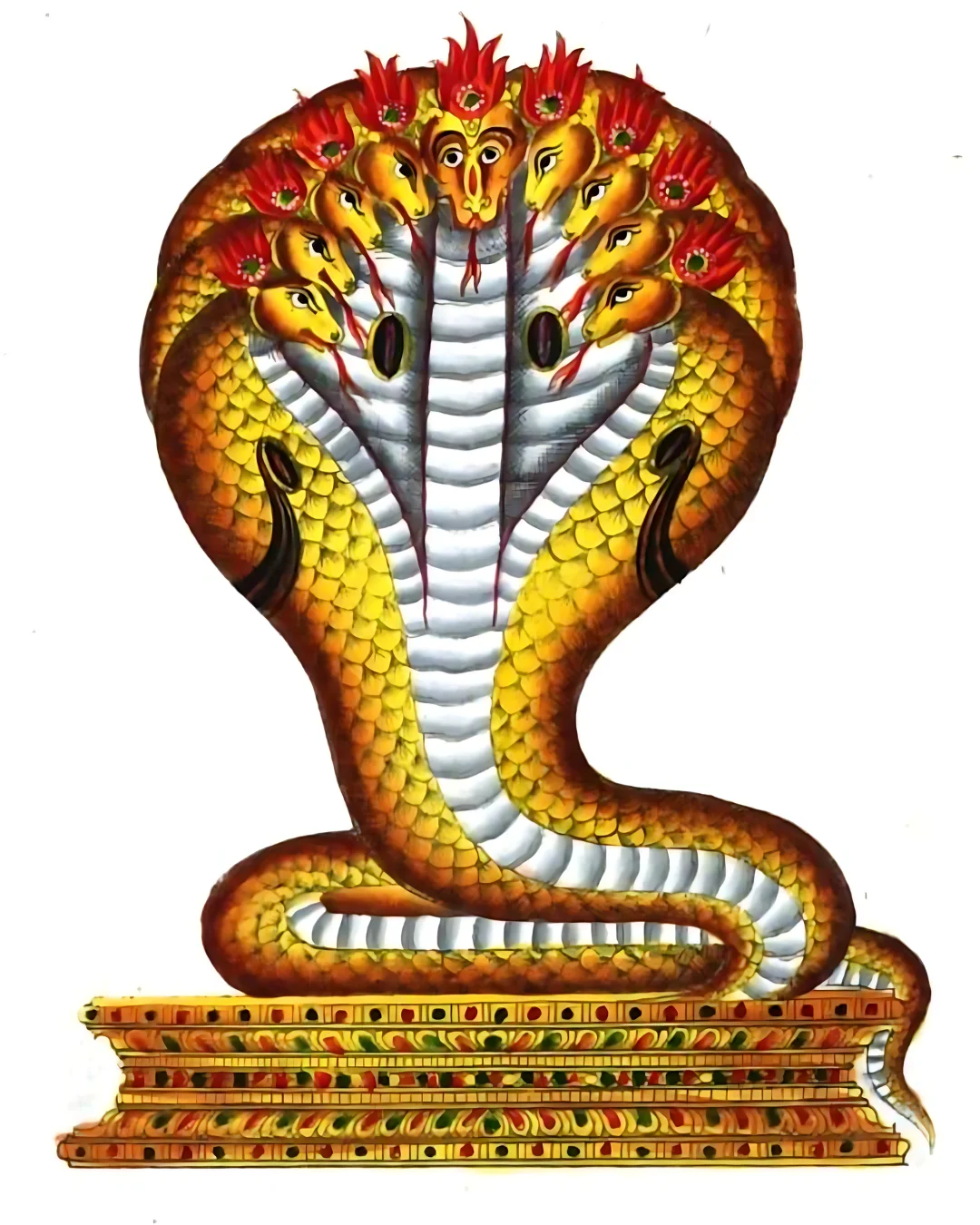
“Similarly, you have saved me and hence you are my Guru now.” Sri Ramanujacharya was a first-class intelligent devotee of the Lord. He addressed the Lord thus, “Lord, since you have proclaimed me as your Guru, give me Dakshina.” (दक्षिणा presents given to the spiritual preceptor). The Lord said “Whatever you shall demand I shall give you at once.”
Greatness of Sri Vaishnava Sampradaya
Sri Ramanujacharya said “Oh Lord, whoever considers me as their Acharya, should have all his sins cut without delay.” Hence, even to this day, whoever sincerely accepts the Parampara of Sri Ramanujacharya, at once loses all his sins without a second’s delay.
Please Like the Blog and Share it for Maximum Reach

